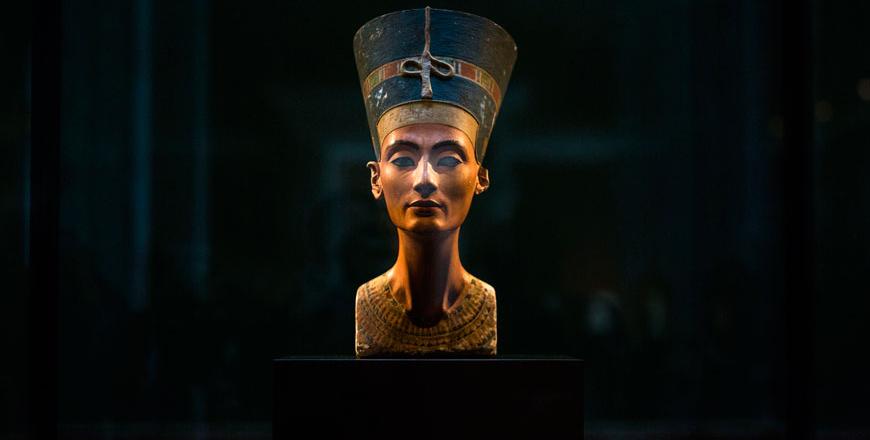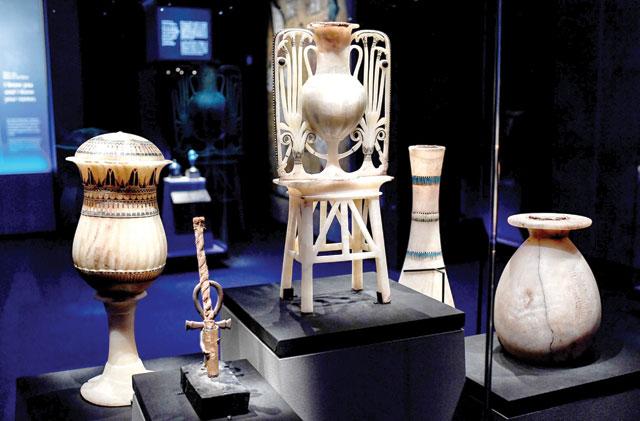You are here
Experts optimistic Tut’s tomb may conceal Egypt’s lost queen
By Reuters - Nov 28,2015 - Last updated at Nov 28,2015

In this September 10, 2014 file photo, a 3,300-year-old bust of Queen Nefertiti is displayed at the New Museum in Berlin, Germany (AP photo)
LUXOR, Egypt — Chances are high that the tomb of Ancient Egypt's boy-king Tutankhamun has passages to a hidden chamber, which may be the last resting place of the lost Queen Nefertiti, experts said on Saturday.
There is huge international interest in Nefertiti, who died in the 14th century BC and is thought to be Tutankhamun's stepmother, and confirmation of her final resting place would be the most remarkable Egyptian archaeological find this century.
New evidence from the radar imaging taken so far is to be sent to a team in Japan for analysis. The results are expected to be announced in a month.
"We said earlier there was a 60 per cent chance there is something behind the walls. But now after the initial reading of the scans, we are saying now its 90 per cent likely there is something behind the walls," Egyptian Antiquities Minister Mamdouh Al Damaty told a news conference.
He said he expected to reach the other side of the tomb's wall within three months.
Discovery of Nefertiti, whose chiselled cheek-bones and regal beauty were immortalised in a 3,300-year old bust now in a Berlin museum, would shed fresh light on what remains a mysterious period of Egyptian history.
It could also be a boon for Egypt's ailing tourism industry, which has suffered near endless setbacks since the uprising that toppled autocrat Hosni Mubarak in 2011 and which is a vital source of foreign currency.
"There is, in fact, an empty space behind the wall based on radar, which is very accurate, there is no doubt," Japanese radar specialist Hirokatsu Watanabe said, his hand hovering over a fuzzy blue radar scan he said indicated the presence of a false wall. The size of the cavity is not known.
Damage risk
British Egyptologist Nicholas Reeves, leading the investigation, said last month he believed Tutankhamun's mausoleum was originally occupied by Nefertiti and that she had lain undisturbed behind what he believes is a partition wall.
But at the news conference with Damaty on Saturday, Reeves warned that even the most minor of incisions in the wall could wreak damage to an inner chamber that may have been hermetically sealed for so many years.
"The key is to excavate slowly and carefully and record well. The fact is this isn't a race. All archaeology is disruption. We can't go back and re-do it, so we have to do it well in the first place," Reeves said.
"I'm feeling more certain today than I expected to be," he said outside the Howard Carter House, a site named after the British archaeologist propelled to international celebrity for his discovery of the Tutankhamun tomb in 1922.
King Tut, as he is affectionately known, died around 1323 B.C. His intact tomb, complete with his famous golden burial mask, was discovered in the Valley of the Kings in Luxor.
Experts have long sought to understand why Tut's tomb was smaller than that of other pharaohs and why its shape was more in keeping with that of the Egyptian queens of the time.
Egyptologists remain uncertain over where Nefertiti died and was buried. She was long believed to have passed away during her husband's reign, suggesting she could be buried in Amarna, where her bust was found in 1912, some 400km north of Luxor.
More recently, most experts, including Reeves, have come to believe she outlived Akhenaten, who may have been Tut's father, but changed her name and may have briefly ruled Egypt.
"Research doesn't always translate into reality. But it looks like we're headed in the right direction, and our investigations are going well," said Reeves.
Related Articles
CAIRO — A group of Egyptian and foreign experts launched Sunday a new bid to unravel the "secrets" of the pyramids, including a search for h
CAIRO — Eight Egyptians involved in a botched repair of the famed burial mask of King Tut, which was corrected late last year, were referred
PARIS — The legendary treasure of ancient Egypt’s boy pharaoh Tutankhamun, some of which is touring the world for the first time, is shroude


















